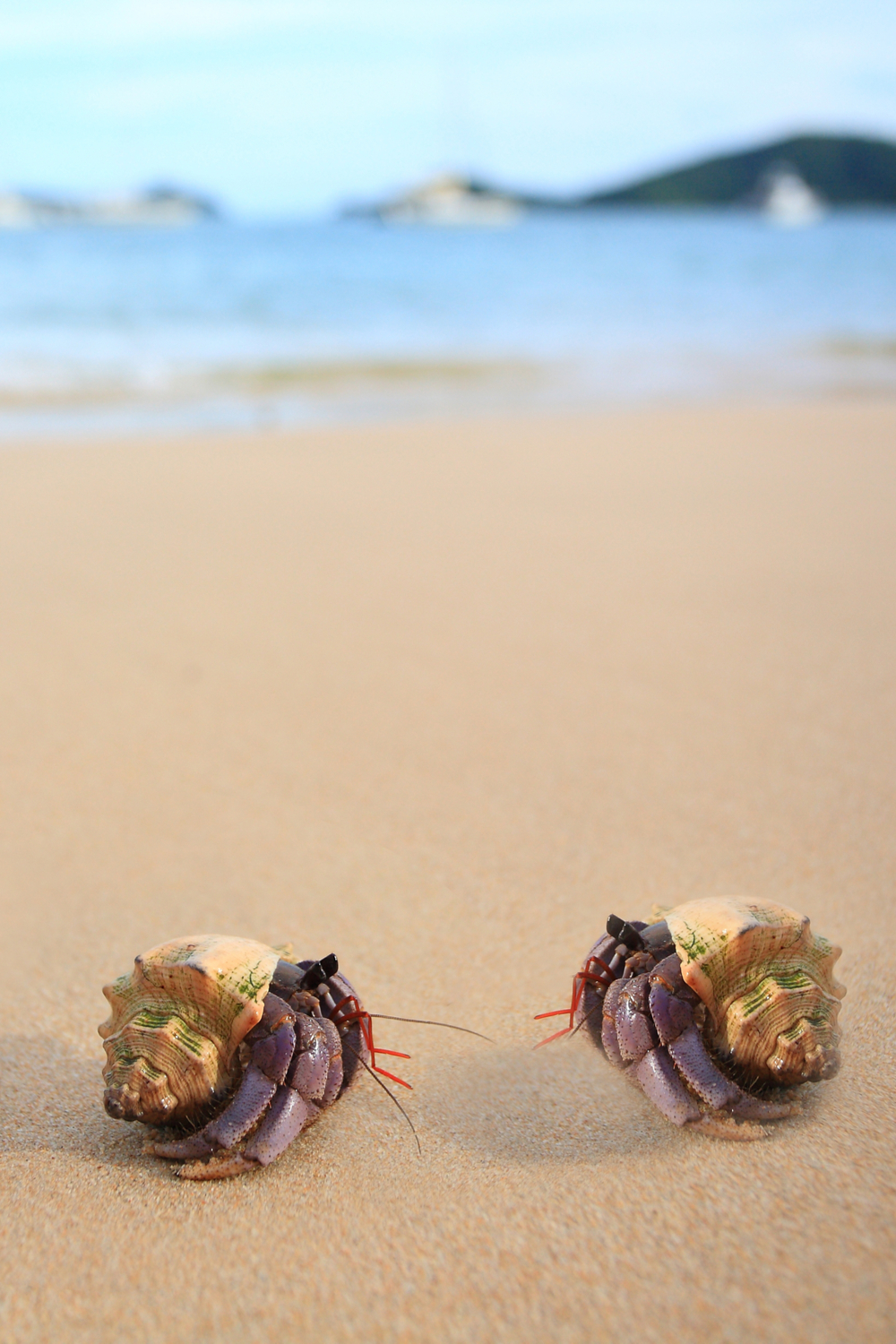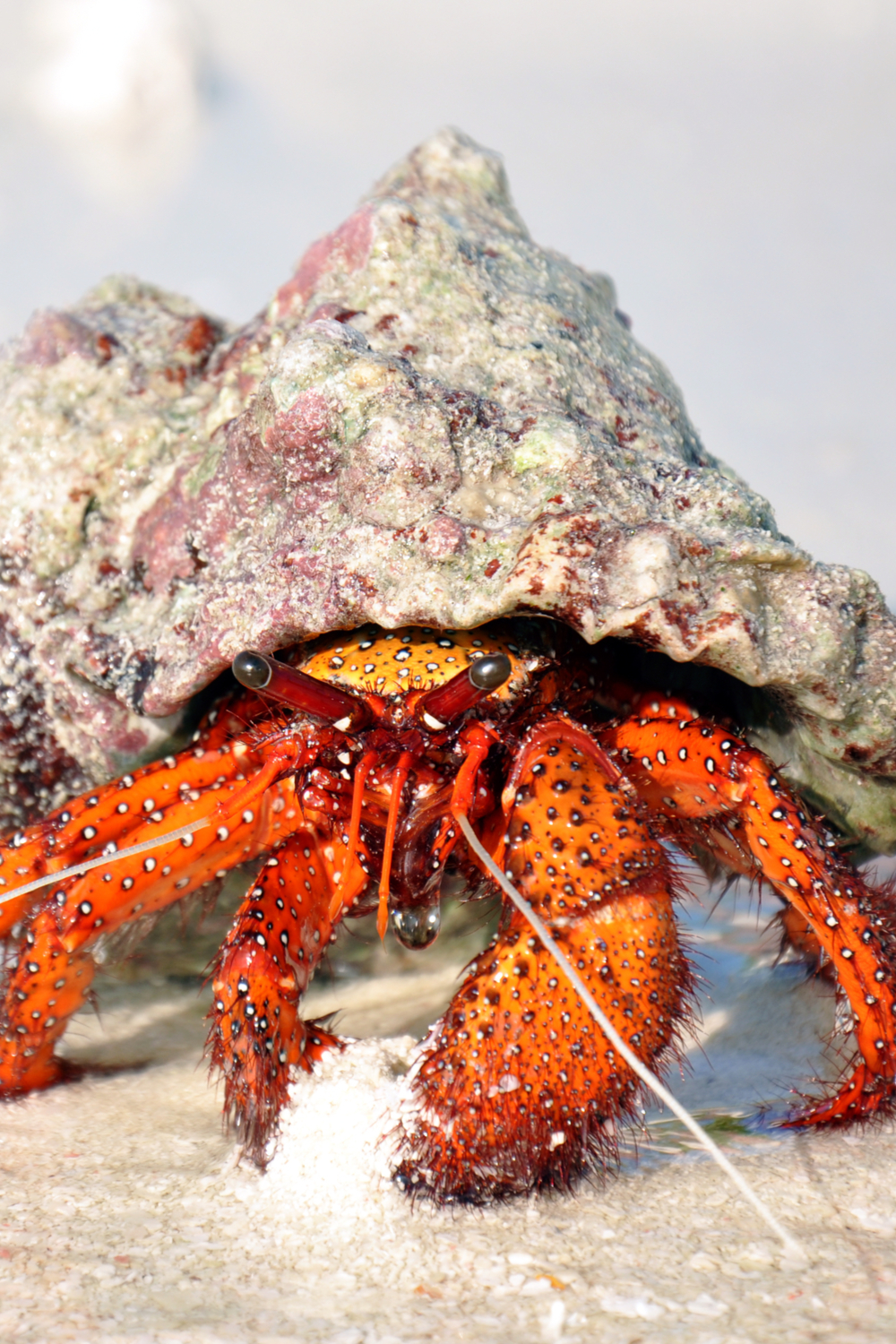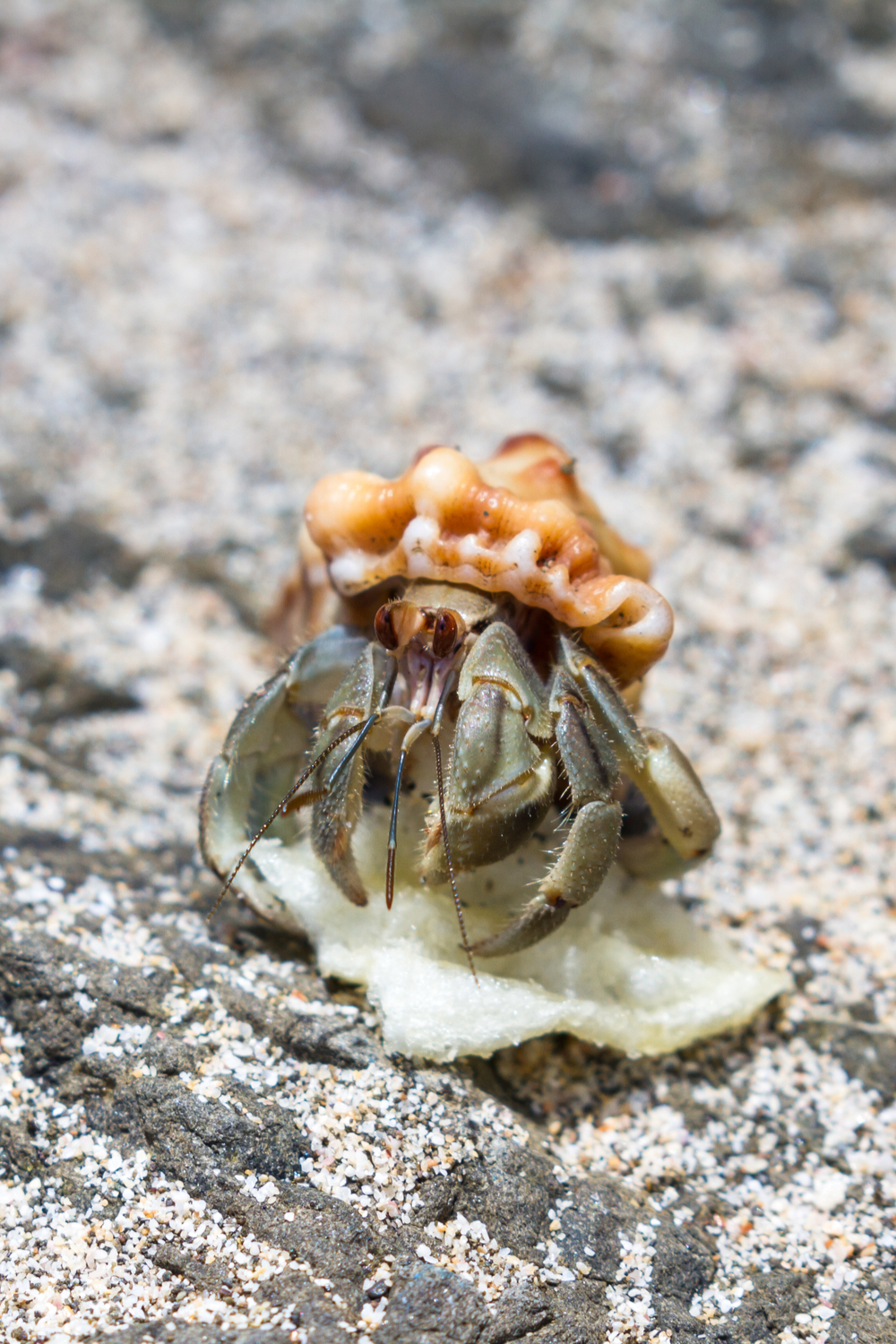What Can I Feed My Hermit Crab
It's easy to spot a hermit crab on the beach going about its business –shell on its back. Here's one thing most people don't know, hermit crabs are not actually crabs!
Another thing people are unsure of is what do hermit crabs eat? Curious? Let's 'kill the cat' and find out.
Hermit Crabs Habits And Biology

Did you know that exists over 800 species of hermit crabs? Generally, they can be divided into two main groups, namely terrestrial and marine hermit crabs.
These critters are social and may live in large colonies of more than a hundred crabs. They will search for food, eat, and sleep together.
Hermit crabs species that are terrestrial live primarily on land. They live close to the shoreline, where they have water that is easily accessible. These crabs will reproduce and spend most of their early life in water.
Marine hermit crabs live entirely in water. They feed, mate, and reproduce in seawater. Only one species of marine crabs is known to live in freshwater. It is called Clibanarius fonticola.
Marine hermit crabs rarely leave the water. When they do, they breathe through their gills for short periods, provided their gills are damp.
Most of them have fragile exoskeletons, and, therefore, they occupy shells of other animals such as whelks. The shells help protect them from predators. Hermit crabs' tails are curved and hooked at the end, allowing them to fit in shells.
As hermit crabs grow, they undergo molting. In this process, they shed their initial exoskeleton and develop a new one. With an increase in size, they will also have to find larger shells to inhabit.
During this time, both the marine and terrestrial hermits have been observed in huge numbers and queue in a straight line to exchange shells. When an individual finds a new shell, it will abandon its former shell.
Hermit crabs' mating behaviors vary from species to species. For example, the Caribbean hermit crab will head for the seashores in large numbers when it's time to mate.
Once the males and females locate each other, they partially come out of their shells, allowing the male crab to transfer sperm to the female and ultimately fertilize the female's eggs.
What Do Hermit Crabs Eat In The Wild?

Hermit crabs are omnivorous and will eat both plants and animals. Generally, these critters are not picky and will feed on just about anything they find.
Hermit crabs in the wild will locate food using smelling receptors found in their antennae. Another way they find food is through observation and feeding on the same things their fellow hermits are eating.
Hermit crabs are mainly nocturnal, and they will regularly search for food under cover of night. They will also rarely eat the same food twice in the same day or night.
Wild hermit crabs will feed on a large variety of foods, some of which include:
- Nuts – the high protein and fat content in nuts is beneficial to hermit crabs about to molt.
- Fruits and veggies –mangoes, carrots, bananas, and sweet corn provide essential nutrients and vitamins, especially for growing crabs.
- Garbage –may be torn open by the hermit crabs searching for whatever kind of food is available to satisfy their appetite.
- Decaying wood –is an acceptable source of nourishment for the hermits. They like nibbling on wood, and rotting wood is soft and easily chewed and swallowed.
- Dead animals (carrion) –serve as a ready meal for hermit crabs and a good source of nutrients. Hermits will mainly feed on the carcass of shrimp and fish.
- Algae –besides producing oxygen for aquatic animals, algae also acts as a healthy food source for hermit crabs.
- Food left by humans on the beach –hermit crabs will chow down almost any food left on the beach by humans.
- Meat –hermit crabs enjoy eating meat as it is a ready source of proteins that support their growth and development. They will feed on bits of poultry, fish, and even beef.
- Poop –yes! Hermit crabs will feed their fecal matter to prevent wastage of nutrients.
- Tiny mussels – hermit crabs will eat mussels and afterward use their shells as their homes.
- Clams
When food is lacking in their environment, hermit crabs will aggressively compete for food. The most dominant and aggressive crab usually ends up with the bigger share of 'the pie!'
What Do Hermit Crabs Eat As Pets?

In comparison to their counterparts in the wild, hermit crabs in captivity will more or less eat the same kinds of food. However, providing them with a constant healthy diet is vital to stay healthy and live longer.
- Meat and fish – are rich in proteins that help in the growth and development of the crab.
- Cuttlebone (cuttlefish bones) –is usually ground into powder and added to other foods as a supplement. It is rich in calcium that aids in the formation of the exoskeleton.
- Pet food –serves as a good treat for hermits as they find it very tasty. It is also high in fats and therefore shouldn't be given to them regularly.
- Leafy greens –such as kales and spinach, are healthy for crabs as they are rich in calcium.
- Peanut butter and jam –serve as treats for hermit crabs. You should hand feed them to prevent them from getting into their gills, leading to suffocation.
- Oatmeal –have high nutritional value and is highly recommended for pet hermits. However, it shouldn't be given to them regularly due to their high-fat content.
- Seeds, nuts, and grains –help in their growth and development. Ensure to chop them down to eatable sizes.
- Crushed eggshells –serve as an excellent source of calcium.
- Fish flakes –hermit crabs kept together with fish may occasionally indulge in fish flakes alongside their tankmates.
- Seaweed –is a form of algae that you can find in the sea.
Just as it is important to be aware of what to feed your pet hermit crab, it is also crucial to know what you should avoid feeding them. Below are foods to avoid feeding them:
- Avocado leaves –skin and leaves of the plant are toxic to hermit crabs and other crustaceans. However, the fruit is edible.
- Citrus fruits –bark, leaves, and peels contain natural insecticides which are harmful to hermit crabs if ingested.
- Table salt –contains large amounts of iodine that is poisonous when taken in large quantities. In small quantities, it aids in the molting of the crabs.
- Tap or chlorinated water –contains chemicals and metals toxic to the crabs, and they may develop health complications.
Other food substances you should avoid feeding your pet crabs include catnip, moldy and rotten foods, chocolate, cocoa, among others.
Feeding your pets a nutritious diet every day will ensure that they grow and develop into mature crabs.
Tips To Feeding Hermit Crabs
The best way to keep your pet hermit crab happy and healthy is by feeding it. The good news is, feeding these critters is an easy task as they aren't picky eaters. That said, it's crucial to provide them with a balanced diet.
If it's your first time owning a hermit crab as a pet or you plan on getting one, following the below steps may be of help:
Select high-quality commercial crab food.
- There are varieties of high-quality commercial foods available in pet stores. To provide your crab with a balanced diet, you can alternate between the different products. These commercial feeds are available in powder, pellet, and gel form.
- Avoid buying commercial feeds that contain copper sulfate and ethoxyquin.
Feed your crabs different fruits and veggies.
- You can switch up the menu from time to time between the fruits and veggies to keep your hermit crab from getting bored with the same food.
- Fruits and vegetables provide your pet crab with the much-needed vitamins and minerals in their diets.
- You should thoroughly wash the vegetables before serving your crab. This practice helps to eliminate pesticides or herbicides.
Provide your crab with some wood.
- Hermit crabs enjoy playing and feeding on wood. Luckily, it's readily available and lasts long. Some types of woods hermit crabs prefer include ash, oak, and birch wood.
- Replace the wood with another once it starts getting old and appears unappetizing.
Feed your pet crab food rich in protein.
- Proteins help maintain the exoskeletons of hermit crabs. In addition, it helps in the processing of carbohydrates.
- You can feed them a wide range of foods rich in protein, such as beef, poultry, and seafood. They will also eat grubs such as earthworms and bloodworms.
- You should give them a new source of proteins every day. They can be served raw or cooked without any sauces or butter.
Occasionally supplement your hermit crab's food with calcium.
- You can add crushed cuttlebone, eggshells, or oyster shells. These foods help maintain the exoskeleton as they are rich in calcium.
- Lack of calcium could lead to an unhealthy crab.
Aside from fruits and veggies, feed your hermit crab other treats.
- Hand-feed your pet crab peanut butter. They love it! However, be sure to take note of the ingredients to avoid substances that may be toxic to your crab.
- Other treats you may feed your crabs include popcorn, washed grass, and honey.
Place your crab's food in shallow dishes.
- Shallow dishes allow your hermit crabs easy access to their food.
- Use plastic or ceramic dishes as hermit crabs are sensitive to metallic items.
Summary
There you have it! Everything there is to know about the topic 'what do hermit crabs eat?' Consider the above steps when buying your first pet hermit crab.
Hermit crabs are fun creatures to have for pets. They are considerably easy to care for and feed. Not to mention, they are playful and can eat just about anything.
Source: https://www.atshq.org/what-do-hermit-crabs-eat/
0 Response to "What Can I Feed My Hermit Crab"
Postar um comentário